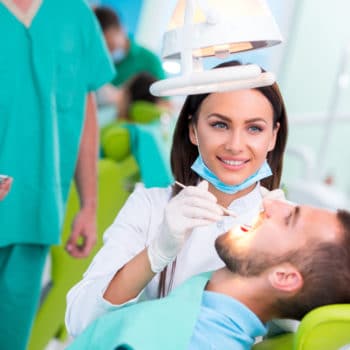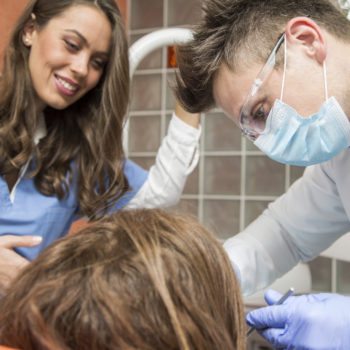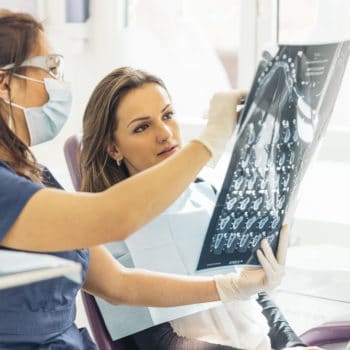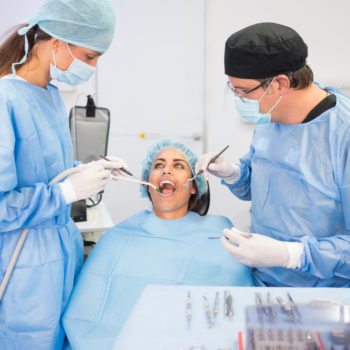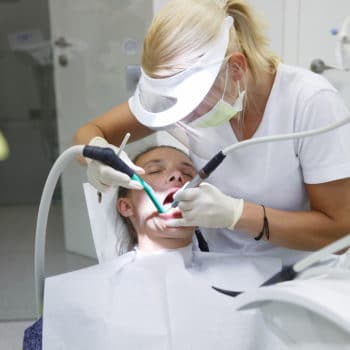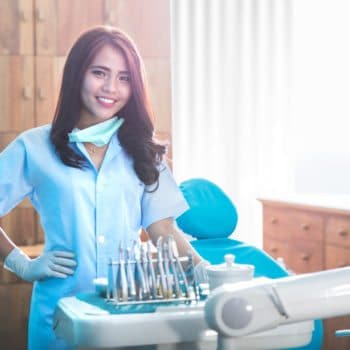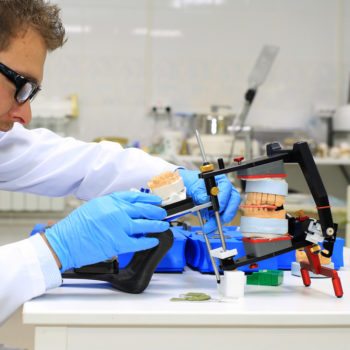Why We Love It
-
$171,040Potential Avg. Salary
-
9%Job Growth Rate
-
Growing DemandJob Outlook
-
Good Entry Level SalaryCareer Attribute
An oral maxillofacial pathologist (OMP) is a dentist who has undergone additional schooling to specialize in the evaluation and diagnosis of conditions and diseases of the oral cavity and jawbone. OMPs receive referrals from dentists and physicians when patients exhibit symptoms of diseases of the mouth.
Recommended Schools
What is an Oral Maxillofacial Pathologist?
The following job responsibilities are common for individuals in oral maxillofacial pathologist roles:
- Evaluate patients who are exhibiting symptoms of oral disease to properly diagnose conditions
- Perform biopsies when needed for assurance in disease and condition diagnosis
- Prescribe medications when needed and/or refer patients to specialists for treatment after diagnosis
A Day in the Life
Oral maxillofacial pathologists are dentists that specialize in the evaluation and diagnosis of conditions and diseases of the mouth and jawbone. Their day-to-day responsibilities are primarily to see patients who are exhibiting signs and symptoms of oral cavity disease or disorder. Generally, patients are referred to an OMP by their dentist or a physician for evaluation and diagnosis by a specialist. However, some patients may simply schedule evaluation visits without a referral from another dentist or doctor.
OMPs specialize in diagnosing a number of oral cavity conditions, diseases, and disorders. They may perform biopsies and send samples to labs when oral cancer is suspected, or they may prescribe medications after diagnosing a patient with a bacterial or fungal condition. In some cases, the OMPs treatment of a patient ends after diagnosis, and the patient is referred to a specialist for treatment of their condition. In other cases, a prescription is all that is needed for treatment, and the OMP conducts follow-up visits with the patient to ensure the condition is cured by the prescribed treatment.
Often, oral maxillofacial pathologists operate their own practices—either individually or with a group of other OMPs or dentists—so their responsibilities may also include general operational tasks. They may be responsible for hiring staff members and assistants and training these individuals to perform their roles. They may also handle the practice’s budget and work with dental insurance providers on coverage concerns and partnerships.
Typical Work Schedule
OMPs generally work full-time during normal business hours and are off on major holidays and weekends. Overtime and evening/weekend hours may be required on occasion when a lot of patients need attention or as needed to handle patient emergencies.
Typical Employers
Most oral maxillofacial pathologists operate their own practices, either individually or with a group of other OMPs or dentists. However, some OMPs may be employed by hospitals or other health providers.
Recommended Schools
How To Become an Oral Maxillofacial Pathologist
Oral maxillofacial pathologists must go through three separate levels of higher education in order to qualify to perform OMP roles. First, they must earn a bachelor’s degree. This is a prerequisite for admission into a professional dental school. The type of bachelor’s degree earned is flexible, but medical- or science-focused degrees often are the best for preparing students for the exams they’ll be required to take to gain admittance into dental school graduate programs.
After completing a bachelor’s degree program, students must then enroll in and complete a professional graduate dentistry program. Graduate dentistry programs culminate in one of three dentistry degrees: Doctor of Medical Dentistry (DMD), Doctor of Dental Surgery (DDS), or Doctor of Dental Medicine (DDM). With any one of these three graduate degrees and proper licensure from your state of practice, you’ll be qualified to work as a general dentist in your area.
After earning a graduate dentistry degree, you must go through an additional 3-year post-graduate program to specialize in oral maxillofacial pathology. The specialist program includes both educational learning and residencies that allow dentists to focus learning on evaluating, diagnosing, and treating oral diseases and conditions. With completion of a post-graduate program and additional state licensure in your specialty, you’ll be qualified to work as an oral maxillofacial pathologist.
Oral Maxillofacial Pathologist Salary Data
We’ve provided you the following to learn more about this career. The salary and growth data on this page comes from recently published Bureau of Labor Statistics data while the recommendations and editorial content are based on our research.
National Anual Salary
Low Range
$92,270Average
$171,040High Range
---National Hourly Wage
Low Range
$44/hrAverage
$82/hrHigh Range
---How do Oral Maxillofacial Pathologist salaries stack up to other jobs across the country? Based on the latest jobs data nationwide, Oral Maxillofacial Pathologist's can make an average annual salary of $171,040, or $82 per hour. On the lower end, they can make $92,270 or $44 per hour, perhaps when just starting out or based on the state you live in.
Salary Rankings And Facts
#13 Nationally for All Careers
Above Average Salary Nationally
Highest Education Among Oral Maxillofacial Pathologists
- 95.5% Doctorate
- 2.1% Masters
- 1.7% Bachelors
- 0.3% Associates
- 0% College
- 0.3% High School
- 0.2% Less than High School
Job Growth Projections and Forecast
2014 Total Jobs
6,7002024 Est. Jobs
7,300Job Growth Rate
9%Est. New Jobs
600How does Oral Maxillofacial Pathologist job growth stack up to other jobs across the country? By 2024, there will be a change of 600 jobs for a total of 7,300 people employed in the career nationwide. This is a 9% change in growth over the next ten years, giving the career a growth rate nationwide of Above Average.
Growth Rankings And Facts
#244 Nationally for All Careers
Above Avg. Growth Nationally
What Companies Employ The Most Oral Maxillofacial Pathologists
| Industry | Current Jobs | New Jobs Needed | % Increase |
|---|---|---|---|
| Offices of dentists | 2,900 | 600 | 1% |
| Federal government, excluding postal service | 2,300 | -200 | 0% |
| Self-employed workers | 1,000 | 200 | 0% |

